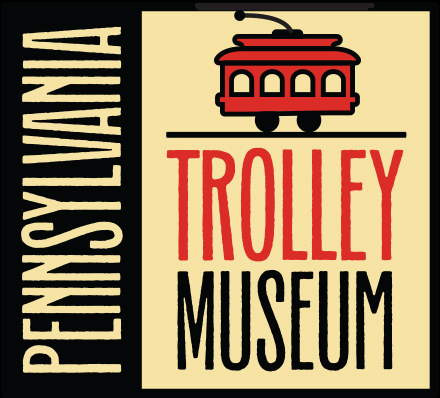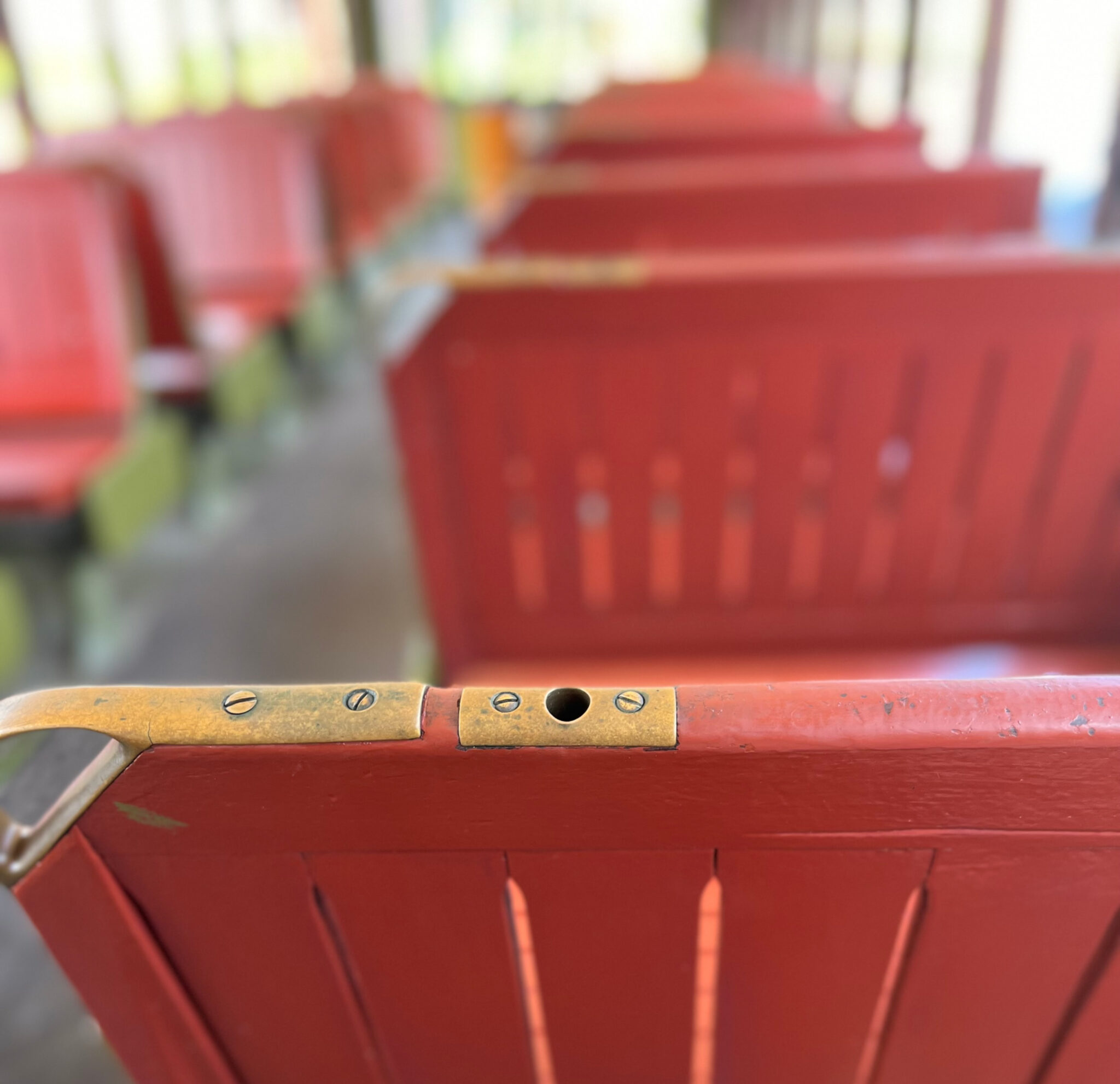Larissa Gula
February 22, 2023
Black History Month is an annual observance meant to honor and pay tribute to African Americans, their stories, and their historic triumphs and struggles. When thinking of Black history and public transit, many people think about Rosa Parks. However, she was just one person of color in the United States who challenged the laws and practices aimed against African American riders.
During our February Trolleyology, the Pennsylvania Trolley Museum had the opportunity to further explore the history of segregation in transit with Eric Madison, Superintendent of Railway Operations at the National Capital Trolley Museum. His “Jim Crow on Streetcars” talk not only examined the origins of segregation on streetcars; it also touched on attempts made nationwide by passengers and employees to challenge America’s “separate but equal” practices.
Interestingly, even the infamous legal standard of “separate but equal” has direct connections to transit history. It originates from the U.S. Supreme Court’s 1896 landmark decision in Plessy v. Ferguson. At the time, the Court upheld the constitutionality of racial segregation under the “separate but equal” doctrine. The case itself was first filed following an 1892 incident in which African American train passenger Homer Plessy refused to sit in a car for Black people.
Though Mr. Madison’s presentation provided an excellent look back on historic events in transit, only so much information can ever be included in a single talk. That’s why our staff and volunteers headed to our bookshelves to see what other resources we could share with those interested in continuing to explore the stories of Black America within transit and railroading history. Though this list is hardly comprehensive, it is an excellent starting point for those who wish to learn more this Black History Month:
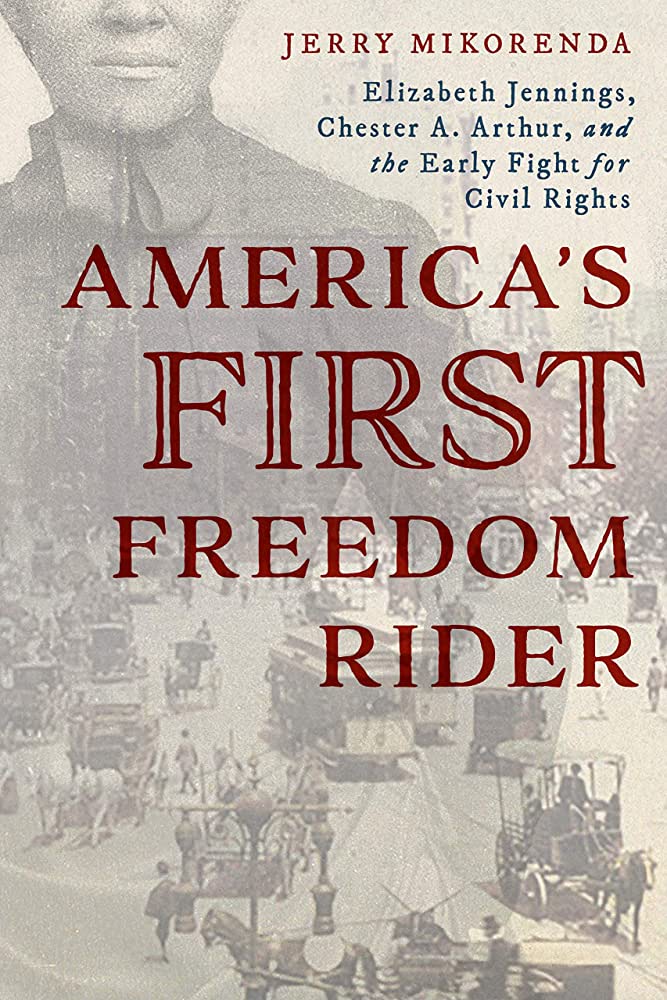
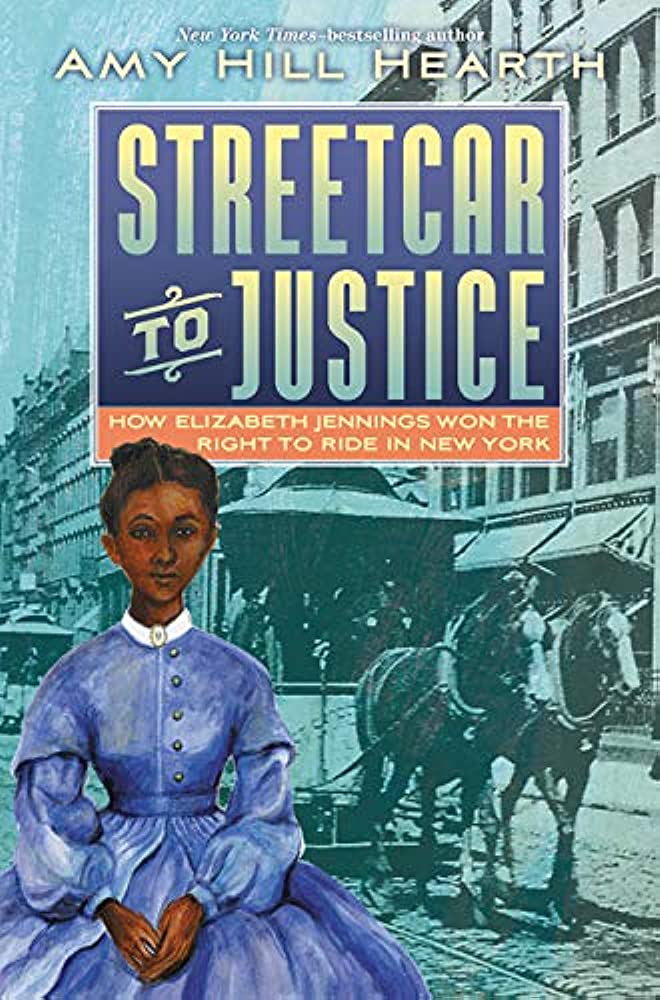
“America’s First Freedom Rider” and “Streetcar to Justice: How Elizabeth Jennings Won the Right to Ride in New York”
One hundred years before Rosa Parks refused to give up her seat on a bus in Montgomery, Alabama, Elizabeth Jennings refused to leave a segregated streetcar in the Five Points neighborhood of Manhattan. She went on to successfully sue the Third Avenue Railway Company for forcibly ejecting her from a streetcar in Manhattan in 1854.
Jennings was just one of the names shared by Mr. Madison in his Trolleyology presentation. We’re happy to report that there are not one, but two books that offer even more information about Jennings:
- “America’s First Freedom Rider” by Jerry Mikorenda recounts the history and Jennings’ impact on desegregating public transit at length. This book offers a deep-dive into not only her ejection from a streetcar and the following trial, but into the backgrounds and lives of Jennings, her family, and her lawyer.
- “Streetcar to Justice: How Elizabeth Jennings Won the Right to Ride in New York” by Amy Hill Hearth also explores Jennings’ story. However, unlike other titles on this reading list, this book is advertised for readers ages 8 to 12. Though not as in-depth as “America’s First Freedom Rider”, this book still features archival maps, photos, and reproductions of handwritten reports and newspaper clippings. It’s an excellent read for families and for younger historians in the making.
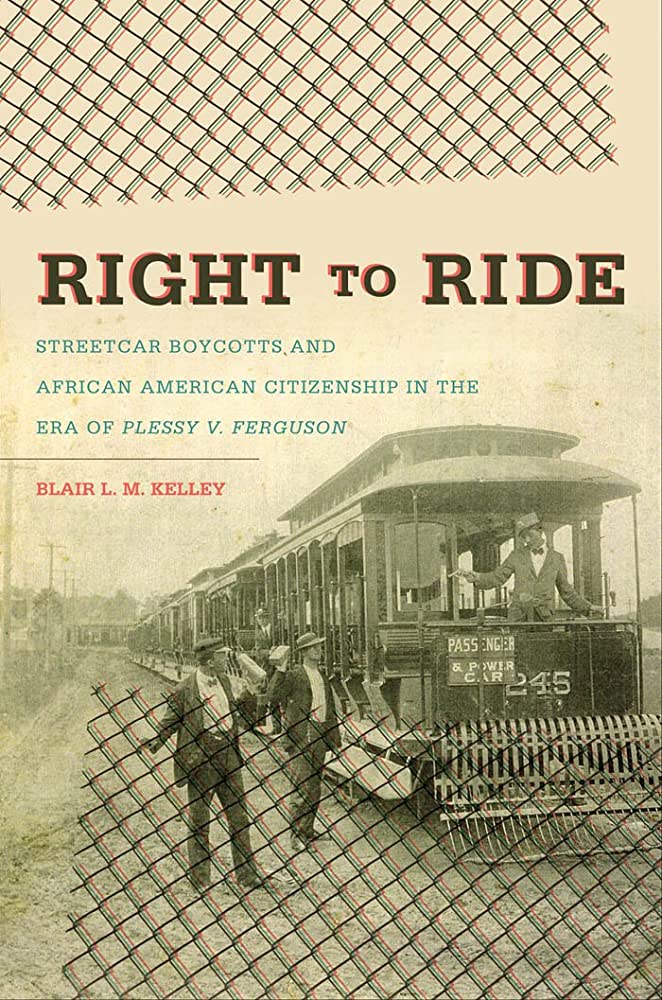
“Right to Ride: Streetcar Boycotts and African American Citizenship in the Era of Plessy v. Ferguson”
Written by Author Blair L. M. Kelley, this thoroughly researched book documents the earliest struggles against Jim Crow era laws and practices. The majority of the book examines activism and streetcar boycotts at the beginning of the twentieth century, particularly focusing on New Orleans, Richmond, and Savannah. Some pages are also spent documenting landmark events in cities such as New York – including the legal victory of Elizabeth Jennings.
In addition to recounting the actions of multiple cities and communities, the book as a whole offers new insight into the resistance and organization against the earliest laws segregating trains and streetcars. It also explains how these early protests and laws later impacted the efforts of other historic figures. For example, Dr. Martin Luther King Jr. was indicted by a grand jury in 1956 for violating the very antiboycott laws used to end the aforementioned streetcar boycotts. It’s an extremely insightful read, and its writing is accessible to anyone interested in learning more about this part of history.
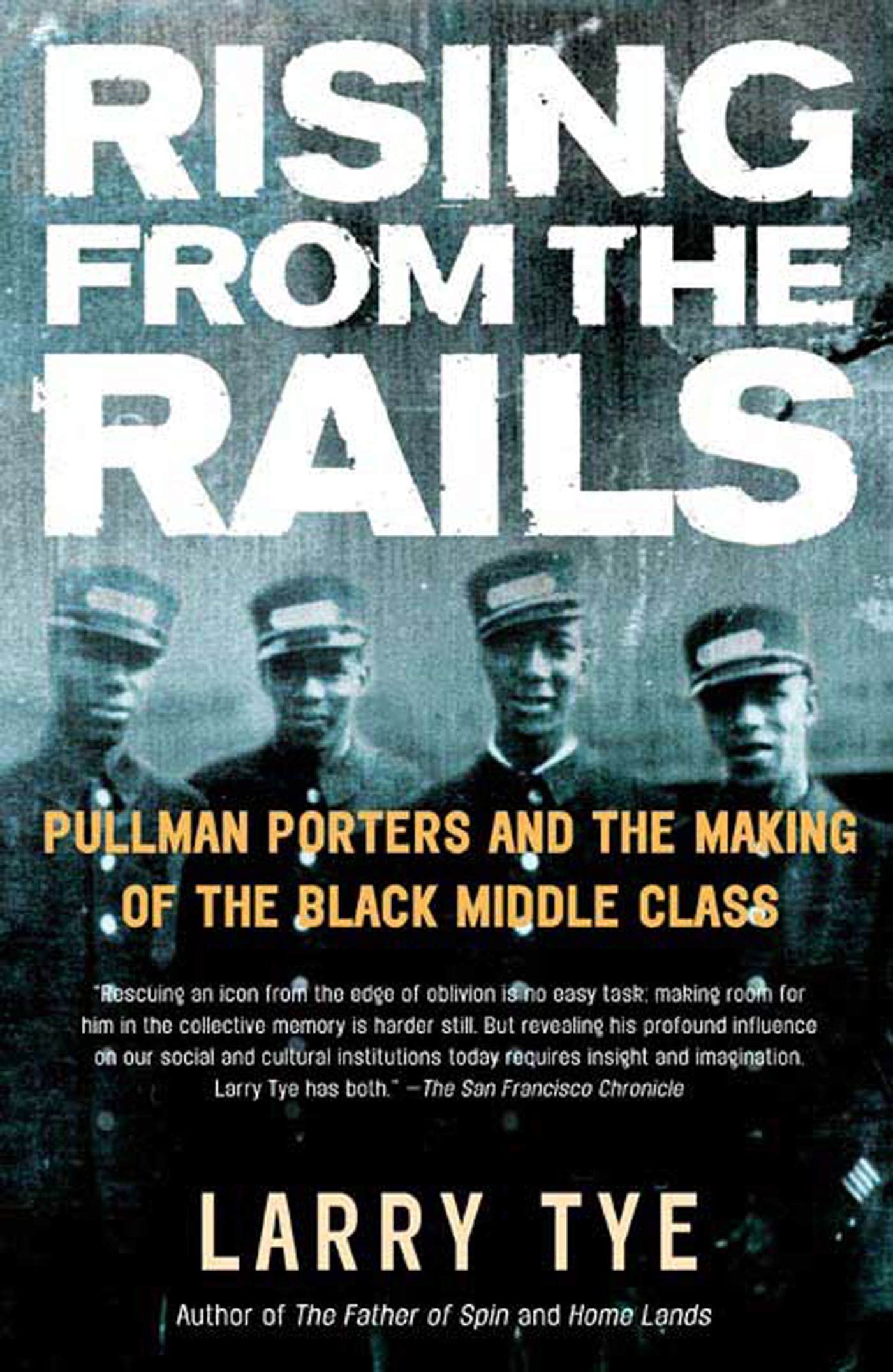
“Rising from the Rails: Pullman Porters and the Making of the Black Middle Class”
Railroading history is just as important and interesting to us as transit history. And where our previously recommended reading explores on-the-ground efforts of activists and lawyers, Larry Tye’s book focuses more on the social history and cultural impact of the Pullman porters.
When the Pullman Company – a manufacturer of railroad cars – began its overnight service in the 1860s, it intentionally hired Black men as porters. These jobs were known to be exhausting and hard work; wages were low, hours were long, and workers spent weeks or months away from home. They were also one of the best and most respected jobs available to African American men at that point in time. They gave workers the opportunity to travel, socialize, and learn throughout the country. A case can be made that these workers played a major role in spreading jazz across the continent. Ultimately, as they traveled on the rails and fought for union recognition, the Pullman porters helped create and enlarge America’s Black middle class – a journey that’s documented in this book.
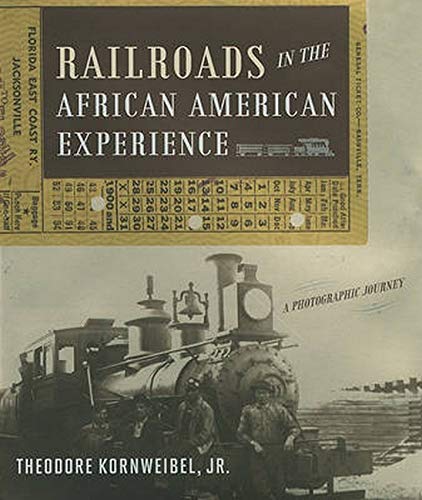
“Railroads in the African American Experience: A Photographic Journey”
We’ve all heard the saying, “A picture is worth a thousand words.” That definitely describes this book by Theodore Kornweibel, which provides an illustrated look at the ways African American history and railroading history intersect.
Historically, railroads have represented both opportunity and exploitation, and these contrasting representations are apparent in Kornweibel’s book. For example, railroads themselves were often built with slave labor. Post-Civil War, African American employees were essential in the operations and successes of American railroads, yet were treated poorly by employers. Black Americans also relied on railroads to travel throughout the country, even as they dealt with segregation practices.
Kornweibel dedicates each chapter of his book to a different occupation or experience that Black riders had on the rails. It’s a powerful documentation of social, cultural, political, and economic influence of African Americans on railroads and of railroads on the Black community.
Other Resources for Black History Month and Beyond
These books are just a small sampling of the information available to you this Black History Month (and throughout the year). And while we’ve focused on our favorite books this month, we’d be remiss if we didn’t mention the abundance of information available through digital newspaper archives and history websites. (We’re particularly fond of what you’ll learn if you Google “Maya Angelou, streetcar conductor”!)
Museums also continue to help our nation observe Black History Month and remember history year-round. The Pennsylvania Trolley Museum’s collection, for example, includes New Orleans Public Service car 832. Though 832 is frequently recognized as “The Streetcar Named Desire” it also ran in the segregated South, starting in the 1920s. Visitors to this day can visit the Pennsylvania Trolley Museum and see the mark of segregation in the car; its seats include holes where a conductor could place a sign indicating where African American riders could and could not sit. It’s an unfortunate part of the car’s history, and is a single example of ways in which we can look back on history and continue to learn from it in the 21st century.
